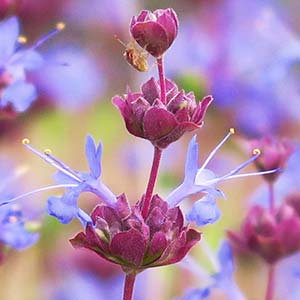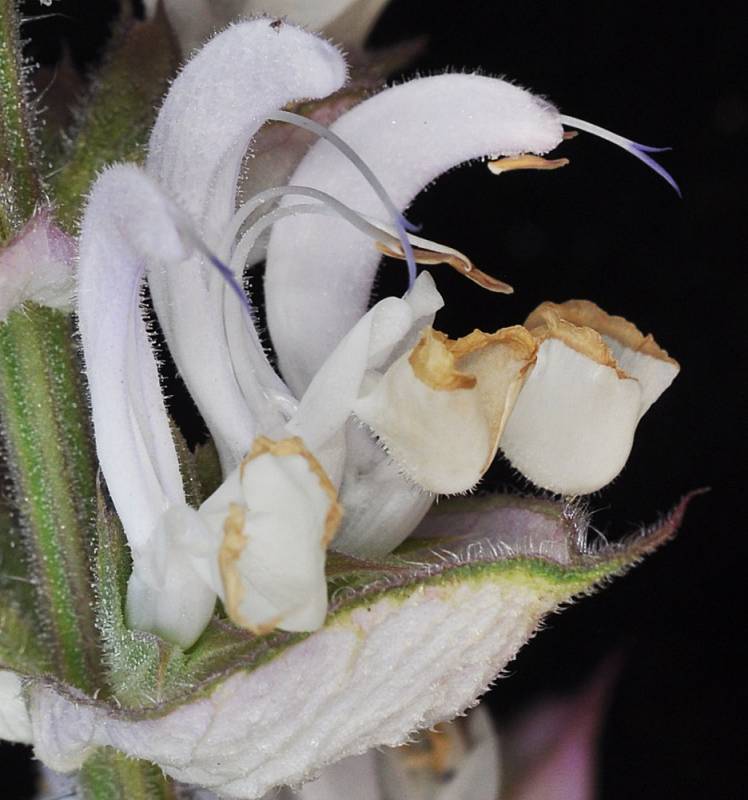Salvia dorrii
Salvia sclarea
gray ball sage, purple sage
cleareye
Leaves opposite, numerous, often in bundles, silvery with a close, mealy pubescence, the blade oblanceolate to elliptic, 1.5-3 cm. long and 4-15 mm. wide, narrowed to a short petiole.
Leaves opposite, the lowermost long-petiolate, wrinkled, ovate to ovate-oblong, toothed or doubly toothed, the blade 7-20 cm. long;
cauline leaves reduced upward and with shorter petioles, often few.
Flowers in a series of dense, bracteate verticels at the ends of many of the branches;
bracts broadly elliptic to obovate, purplish, 7-12 mm. long, dry, granular on the back;
calyx two-lipped;
corolla usually bright blue-violet, I cm. long, two-lipped, the spreading, 3-lobed lower lip much longer than the short, flat, 2-lobed upper lip;
stamens 2, long-exerted;
style narrow, long, 2-parted;
ovary 2-celled, superior.
Branches with scattered verticels of flowers subtended by conspicuous bracts 1-3 cm. long with a tail, often dry and purplish;
calyx glandular and hairy, the upper lip with bristle-tipped, lateral teeth 1.5-3 mm. long well separated from the shorter, central tooth;
corolla bilabiate, blue or white, often marked with yellow, 1.5-3 cm. long, the upper lip arched, somewhat hooded, longer than the tube and 3-lobed lower lip;
stamens 2, ascending under the upper lip, exerted.
Nutlets 4
Nutlets 4.



